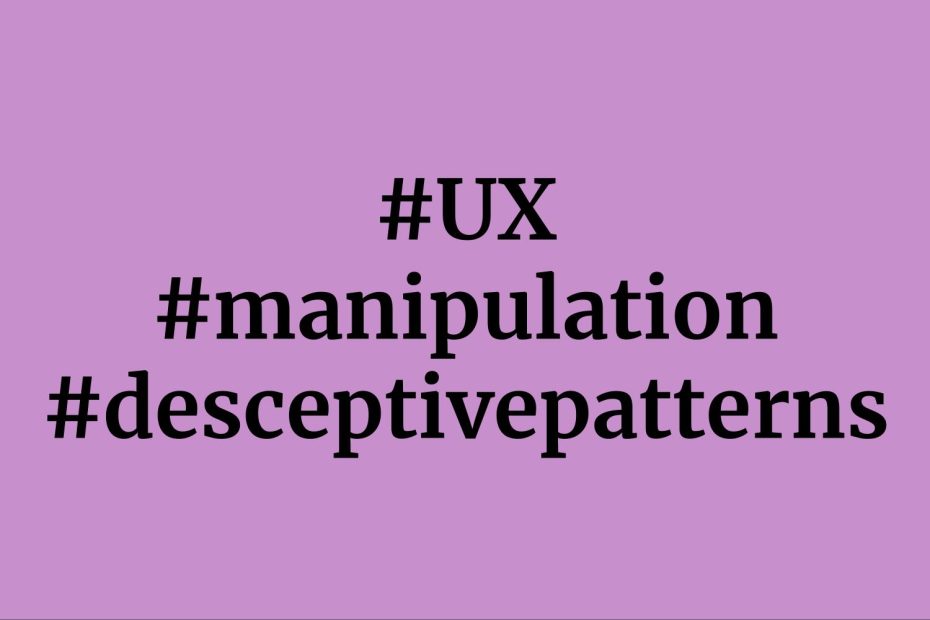User experience design is manipulating you every day. Have you ever noticed that the “Sign me up”-Button on a newsletter-form is much bolder then the “No thanks”-Button? Or the information you need to quit your subscription to some service is so hard to find. That it takes you ages to get the cancellation done? Feels bad right? And guess what – it was designed that way for you by greedy marketing people. Using a UX-phenomenon called “Deceptive Patterns” or “Dark Patterns”.
Why be bad and greedy?
Let’s be honest here: every business needs to make money somehow. That’s how the world works and that’s not a bad thing either (comparing capitalism to other economic models like communism for example). But businesses are going to maximize their profits in many ways. One being tricking their users into doing something the business wants them to do – as long as it’s legal and as long as it’s working. And believe me – it is. According to Arvid Brobeck (partner at class 35, an agency with a focus on UX and UI-design) these Deceptive Patterns include things like:
- Trick questions
Asking users questions in a way, their answering would differ if they would read much more carefully is a common method. It is exploiting the fact that nowadays people scan and don’t read anymore. - Forced Continuity
Automatically renewing a subscription that was free for the first month but paid after it is something, that has happened to all of us for sure - Disguised Ads
Here, the advertisement is designed and placed in a way it looks like a UI-Element. I’m talking about you, little Download-Button on that free-mockups-page. This is why I have trust issues. - And many more, check here for more examples!
So what can you do about these businesses exploiting user behavior? Well, turns out not a lot. In terms of law and legislation, these companies are not doing anything they could be held accountable for. Using deceptive techniques of any kind is a daily standard for a lot of businesses. Whether online or offline, and a lot of them have existed long before deceptive patterns in UX. People are debating those patterns online, wanting them to be regulated by governments, which might happen someday. But surely not to the extent of them being banned completely.
For the users themselves, digital literacy is the most useful tool against online and UX manipulation in my opinion. Being able to navigate the digital world and seeing these techniques as a critical thinking human is important. Otherwise you will risk getting EMail you didn’t clearly ask for. Or giving away personal information to companies you didn’t want to. Or even spending money on products and services you did not intend to. So besides perceptive patterns being annoying and cost you nerves, they can cost you real money.
Comparing “Deceptive Patterns” to the real world
When thinking of how deceptive patterns can be explained to non-digital people (like your grandparents), it is a lot like you being in a toxic relationship. And everybody who has ever been in one can relate to that I reckon. Because when your partner is being dishonest, is manipulating into doing whatever they want you to do, even when these things are no good for you. When they ask trick questions, make you feel dumb and helpless. When they ignore your needs and do not support you on your journey – that is a real deceptive pattern.
Not all dark things are bad
Adding to a conversation we had with Rahel Anne Bailie from “Content, Seriously” in London, where she explained that the naming of “Dark Patterns” is actually a racist problem. Because, and I quote, “Not all dark things are bad”, I think Rahel made a good point there. Naming things is important, naming gives context and will furthermore also influence similar named things. That’s why I followed her suggestion and went with “Deceptive Patterns” in my post rather then “Dark Patterns”. Renaming something takes time, but if it is for the right reason, there is no better time to start than now!
